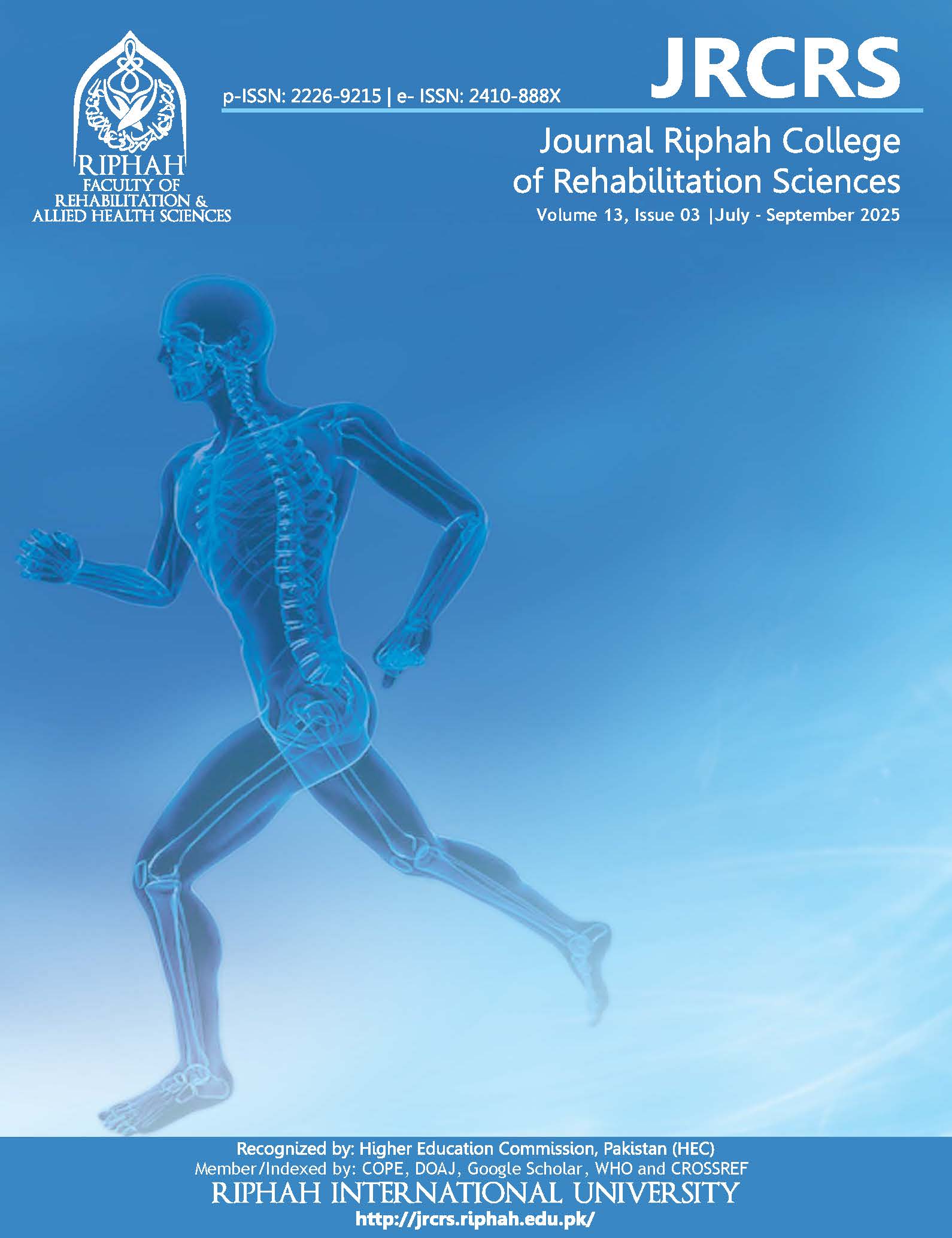Frequency of Shoulder and Elbow Overuse Injuries and its Association with Risk Factors among Overhead Athletes in Peshawar, Pakistan
Abstract
Abstract:
Background: In sports that involve overhead movements, the overuse injuries occurs due to the repetitive exertion of force in an arc overhead exerts significant stress on the shoulder and elbow joints.
Objective: To find out the frequency of shoulder and elbow overuse injuries among overhead athletes and the association of frequency with associated factors such as age, gender, sport, years of experience and weekly playing hours.
Methodology: This cross-sectional study was conducted at Peshawar Sports Complex and Hayatabad Sports Complex, Peshawar from July to October 2024. A total of 132 athletes of ages between 18-40 years were included in this study. Data was collected through Oslo Sports Trauma Centre Overuse Injury Questionnaire from the athletes. Data was analyzed using Statistical Package for Social Sciences version 27.0 to create graphs and tables. Chi square test was used for statistical analysis to find the association between overuse injuries and its risk factors.
Results: A total of 132 athletes were part of this study. The frequency of shoulder overuse injuries was 17.4% while the frequency of elbow overuse injuries was 5.3%. Most of the affected athletes were between the ages of 18-25 years. There was no significant association between the frequency of shoulder and elbow overuse injuries and its risk factors.
Conclusion: This study concluded that statistically, the overuse injuries do not show significant association with the factors such as age, gender, sport, years of experience and weekly training hours.
Keywords: Elbow Injuries, Overhead Athletes, Overuse Injuries, Shoulder Injuries
Downloads
Published
How to Cite
Issue
Section
License
Copyright (c) 2025 All Articles are made available under a Creative Commons "Attribution-NonCommercial 4.0 International" license. (https://creativecommons.org/licenses/by-nc/4.0/). Copyrights on any open access article published by Journal Riphah college of Rehabilitation Science (JRCRS) are retained by the author(s). Authors retain the rights of free downloading/unlimited e-print of full text and sharing/disseminating the article without any restriction, by any means; provided the article is correctly cited. JRCRS does not allow commercial use of the articles published. All articles published represent the view of the authors and do not reflect the official policy of JRCRS.

This work is licensed under a Creative Commons Attribution-NonCommercial 4.0 International License.







